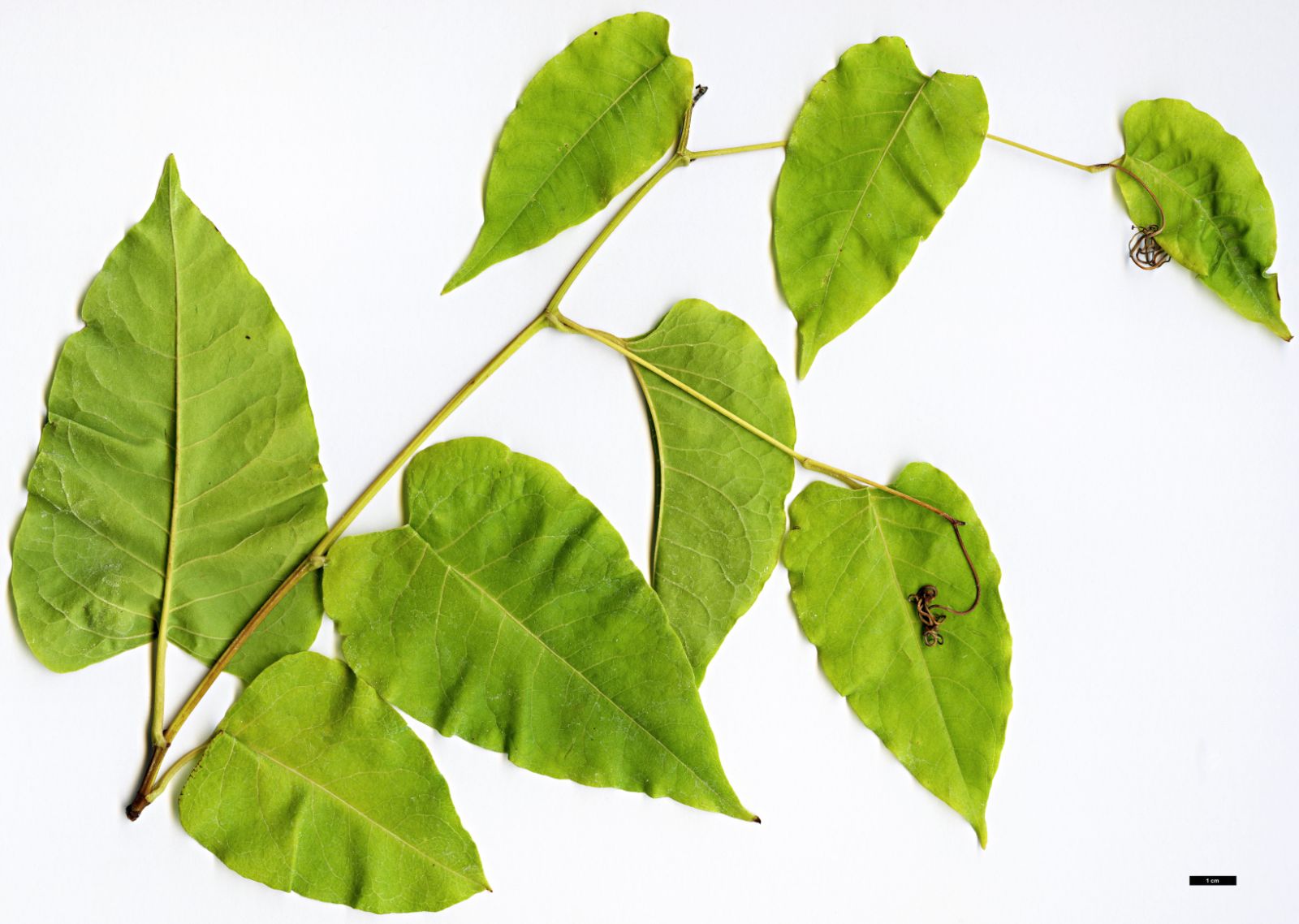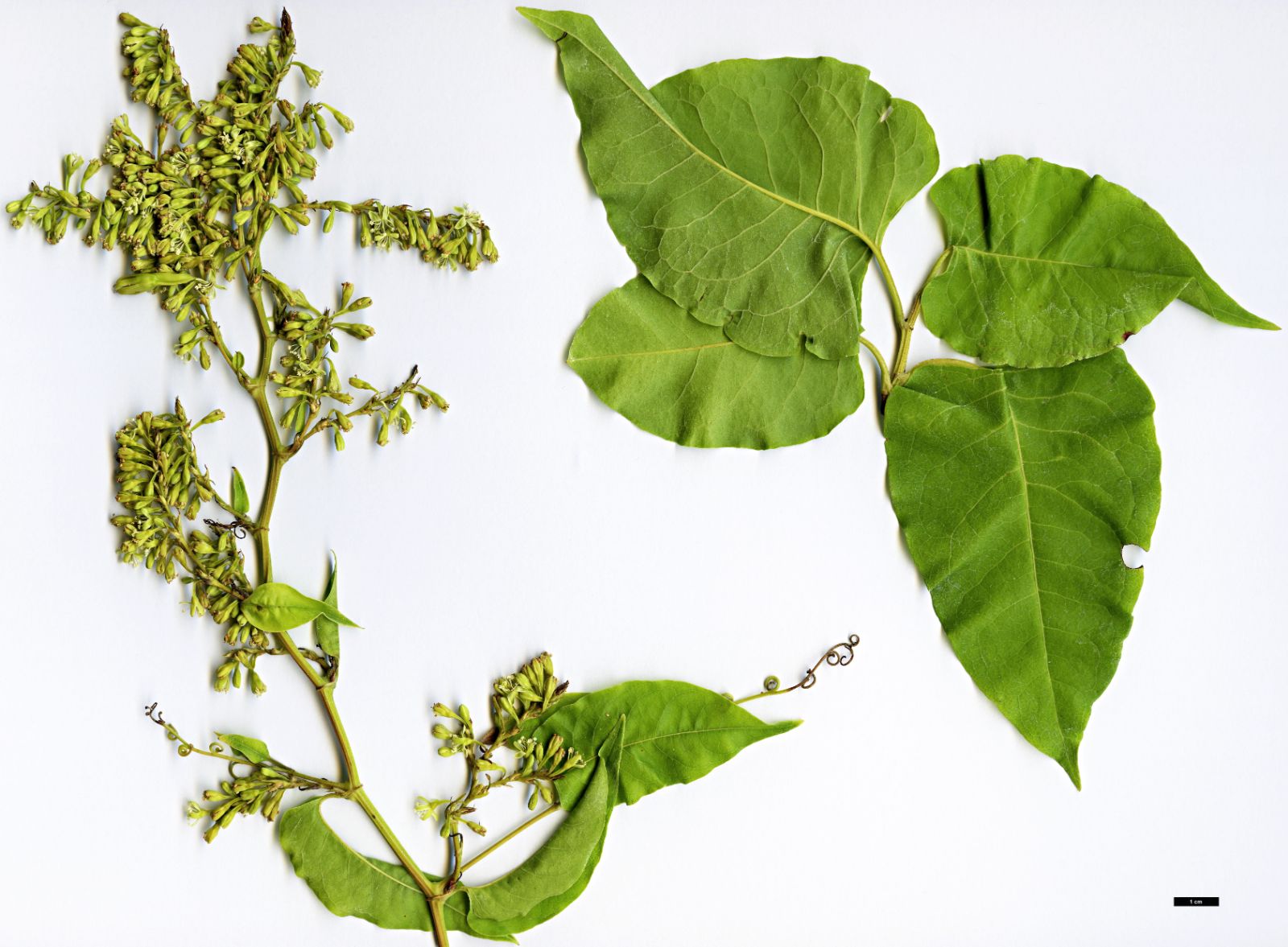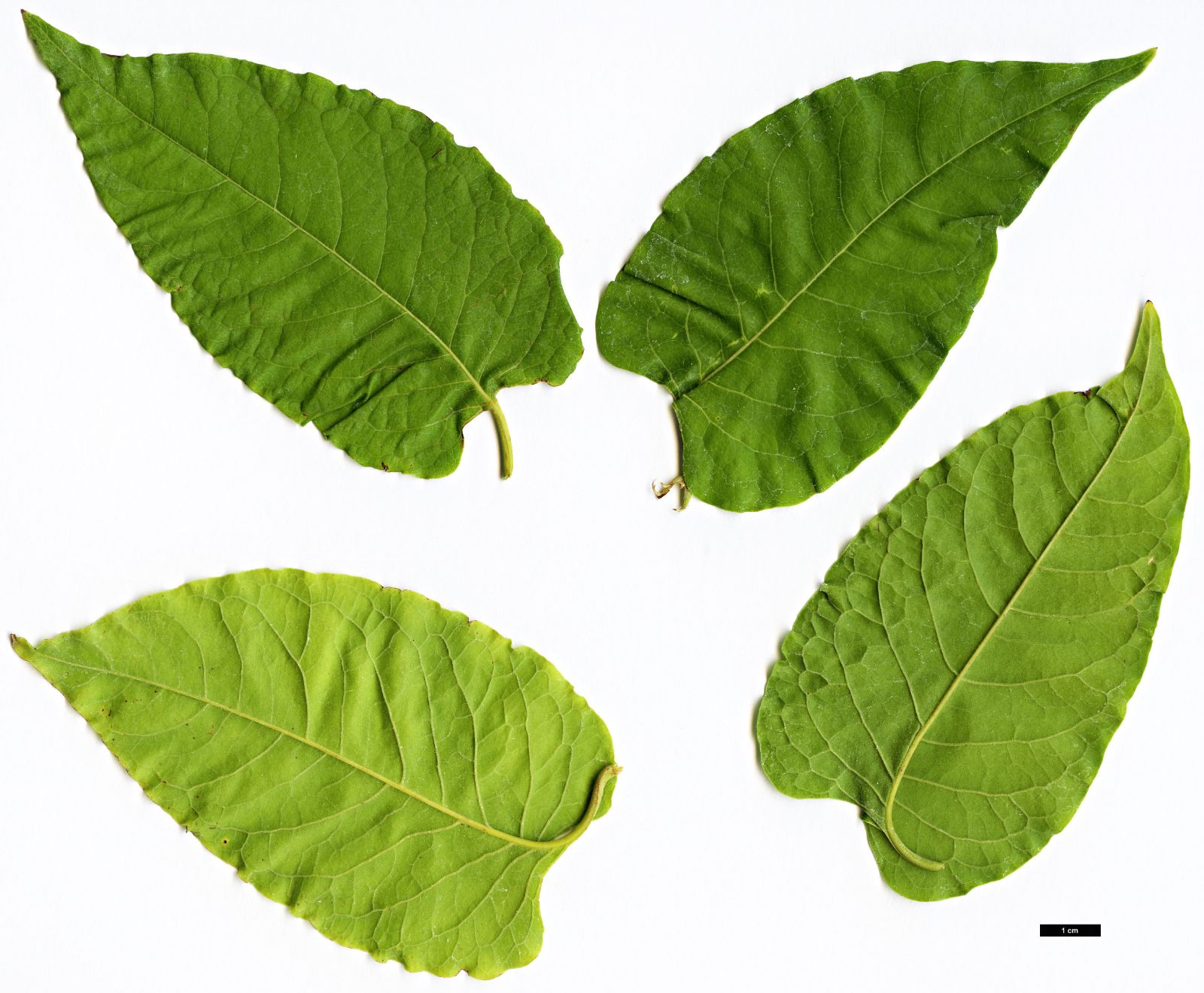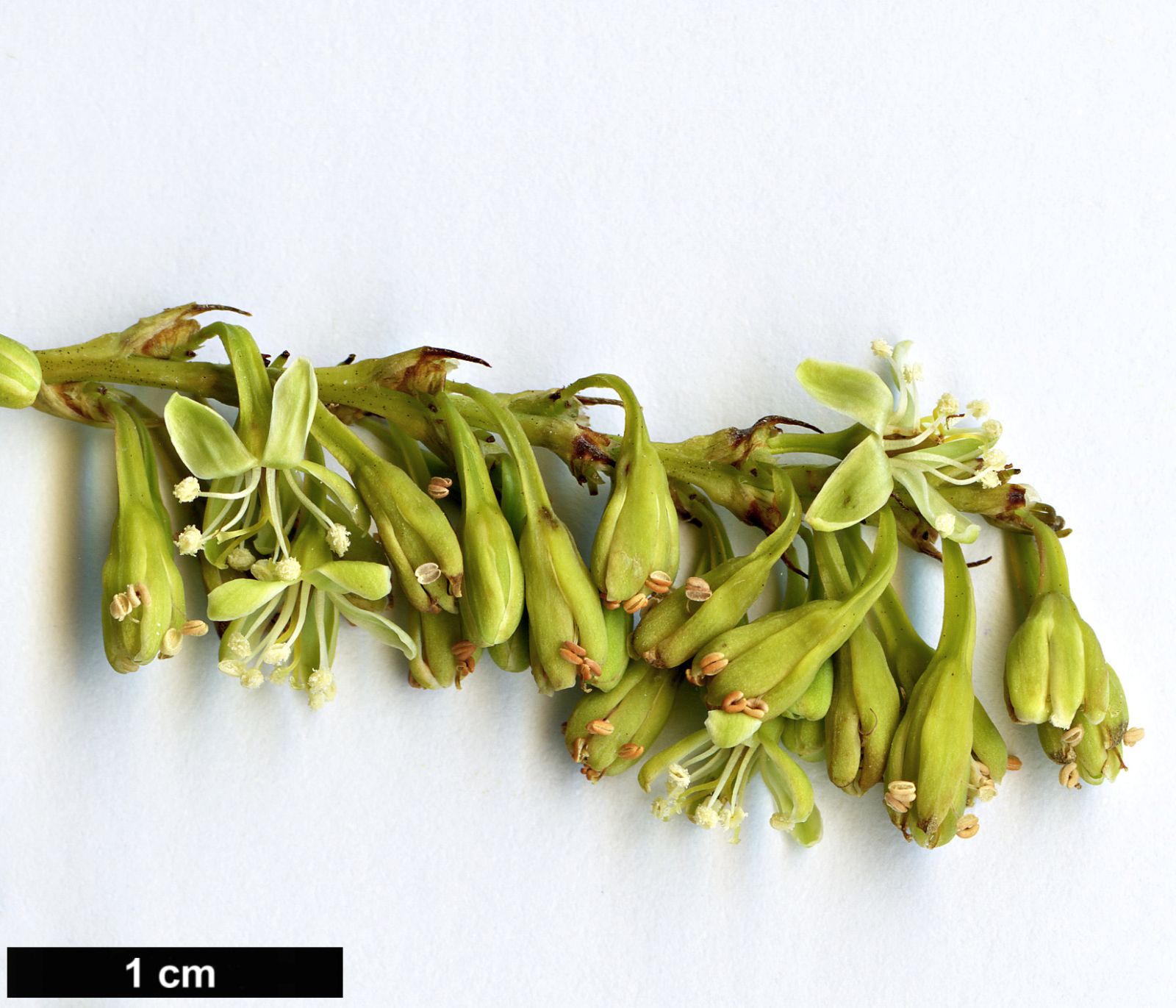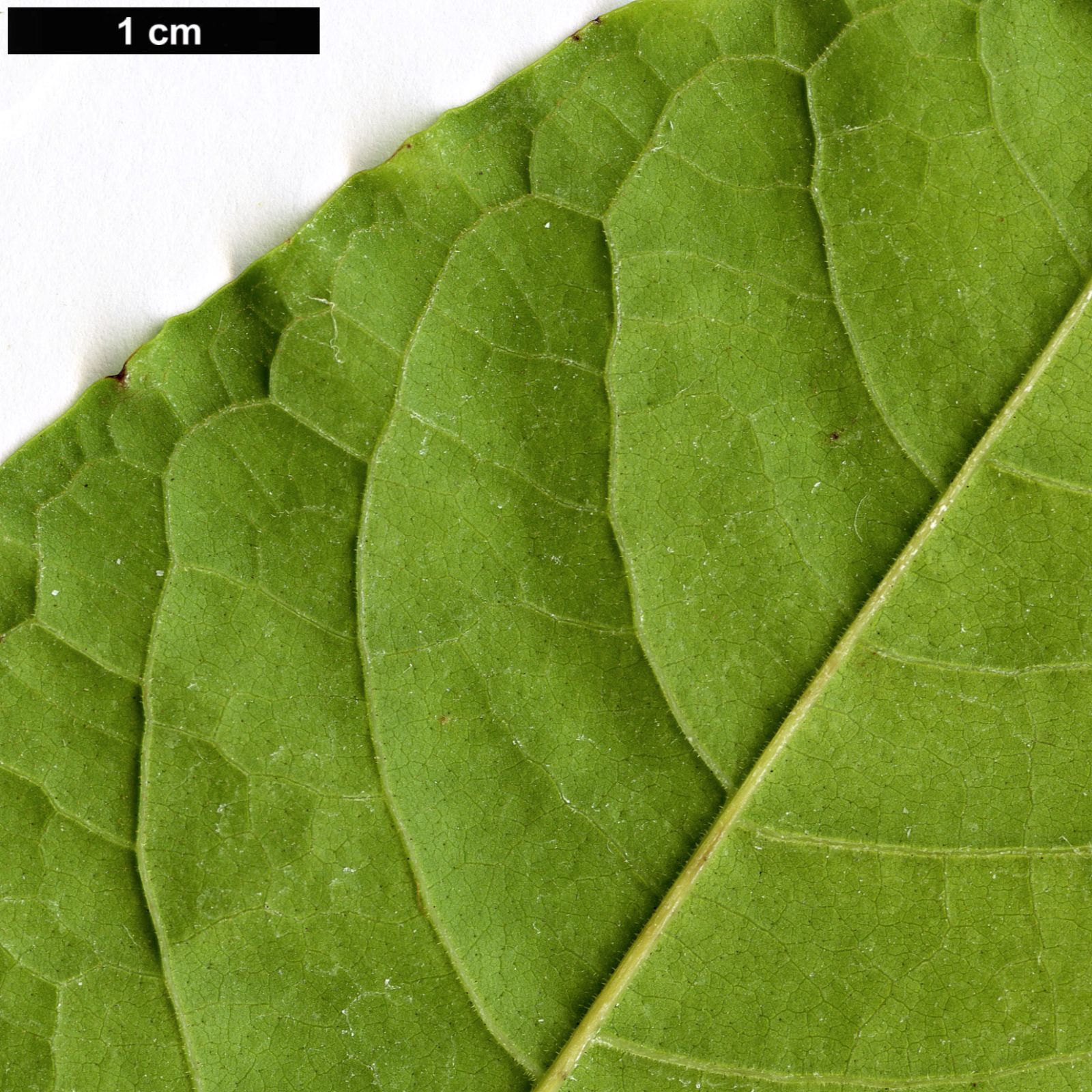Brunnichia cirrhosa
Credits
Article from Bean's Trees and Shrubs Hardy in the British Isles
Recommended citation
'Brunnichia cirrhosa' from the website Trees and Shrubs Online (treesandshrubsonline.
Genus
Other taxa in genus
A deciduous climber growing 15 ft or more high, with slender, grooved stems, glabrous except at the joints, and supporting itself by means of forked tendrils terminating the branches. Leaves alternate, ovate, truncate or heart-shaped at the base, pointed; 2 to 41⁄2 in. long, 11⁄4 to 21⁄2 in. wide; not toothed, dark glossy green, almost or quite glabrous; stalk 1⁄2 to 1 in. long. Flowers small, greenish, arranged in clusters of two to five on slender terminal and axillary racemes 11⁄2 to 6 in. long, the whole forming a loose panicle 12 to 18 in. high opening in July. Calyx persistent and surrounding the seed-vessel, enlarging and becoming leathery as the seed ripens; there is a wing 1⁄8 in. wide on one side extending down the flower-stalk, the whole ultimately about 1 in. long. Only a proportion of the flowers ripen seed and develop in this curious way. Seed deeply six-grooved.
Native of the south-eastern United States; introduced in 1787. This curious and interesting climber has not sufficient flower beauty to gain it much recognition in gardens, and although introduced so long ago, is very uncommon. It is perfectly hardy at Kew, where it has lived without protection in the open for more than seventy years. It somewhat resembles Smilax in leaf and growth.

